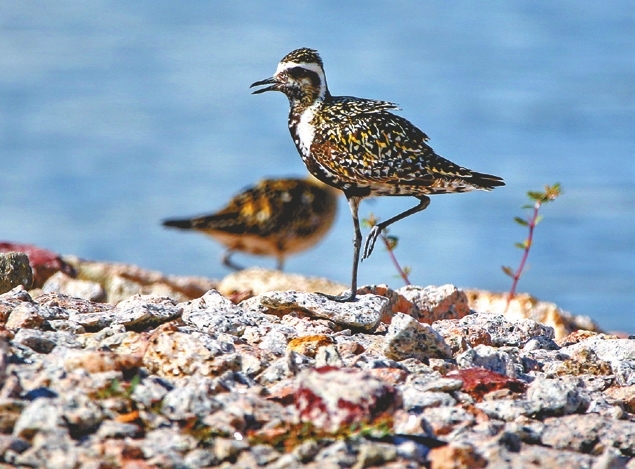
Bird migration is one of the most beautiful events that happen in nature. Living in Shenzhen puts us in a fantastic position to observe it firsthand. Starting mid-autumn and lasting until the next spring, Shenzheners can enjoy the arrival of various bird species visiting the city, where they eat, reproduce or just live. One of the first species to arrive during this year’s migration has flown all the way from Alaska and Siberia. The Pacific golden plover (Pluvialis fulva), a beautiful medium sized bird, can reach up to 26 cm long, with long thin legs. Observed from afar, the bird’s fantastic plumage resembles a sort of scaly coat, displaying golden, white, gray and black colors that contrast perfectly with each other and makes them visually attractive. The intensity of the colors and some of their patterns change when the breeding season arrives, making the males more attractive to females and for birdwatchers as well. The breeding season starts up north in early summer when the birds will lay up to four eggs per clutch and both parents will incubate for a little less than a month before preparing to migrate. Those birds that are not breeding will travel first, in July, followed by the breeding ones in August and then the juveniles in September and October. Most of the time, these birds travel together in flocks and are rarely seen wandering alone. Right now, there is a big flock of at least 20 or 30 resting by Talent Park in the Shenzhen Bay area, where they look for rocky or muddy shores to feed, mainly on small invertebrate animals they can easily find near the shores. This year’s migration started a little bit earlier than usual, which may have been caused by global warming. This forebodes a threat to the survival of the species due to the changes in the sea level and in the variety and number of the local species. In the long term, it may not just affect the migratory birds’ behavior. The worst scenario could be the species will no longer find their temporary homes or things to eat when they arrive. 2021.09.05 Two Pacific golden plovers are seen foraging in Talent Park, Nanshan District. | 
